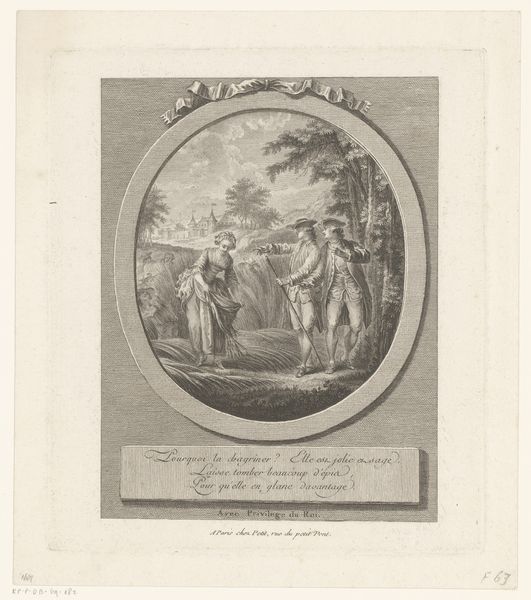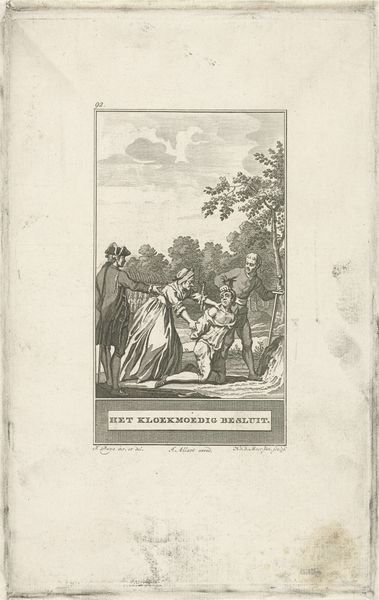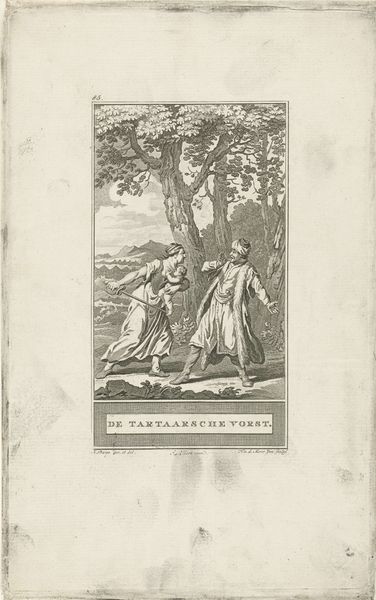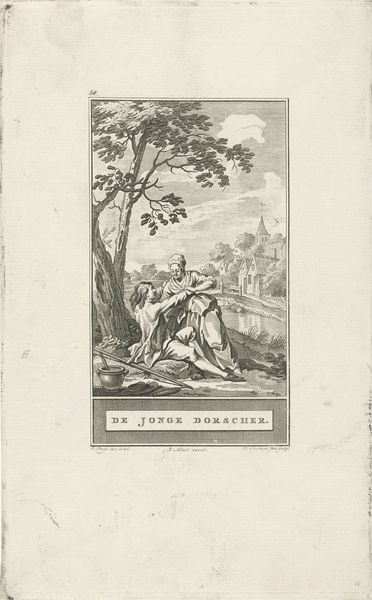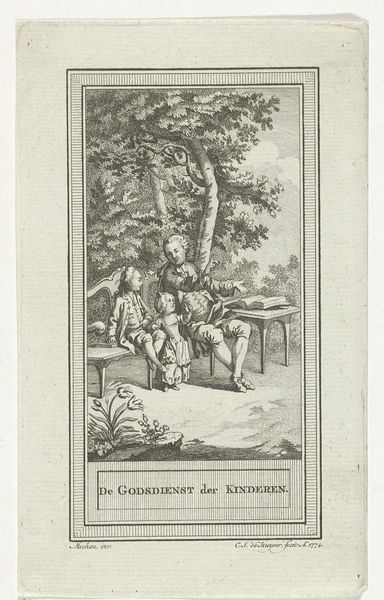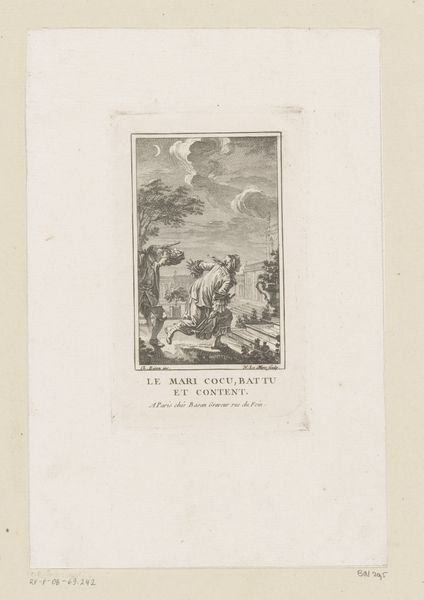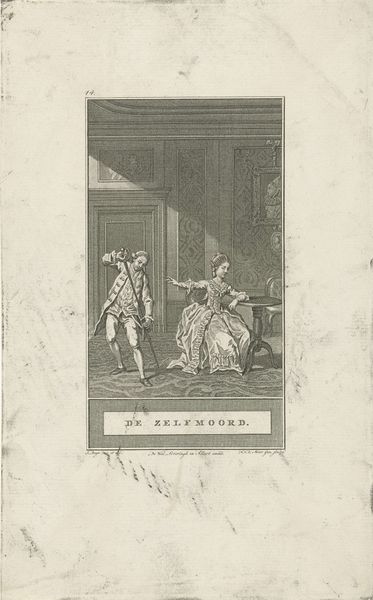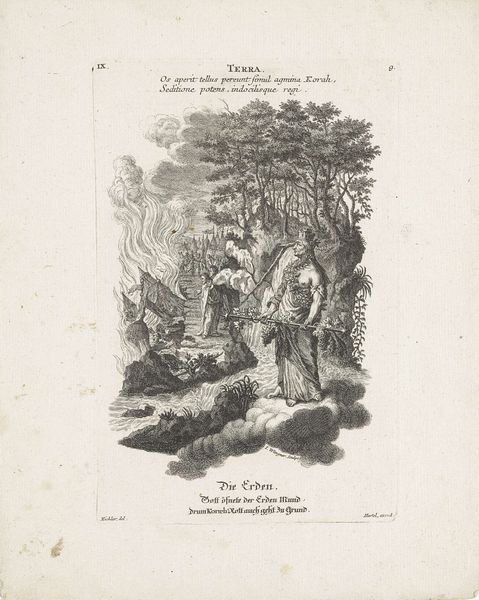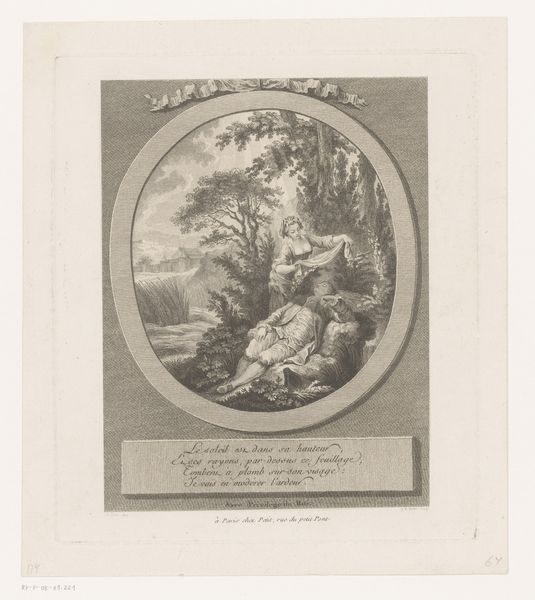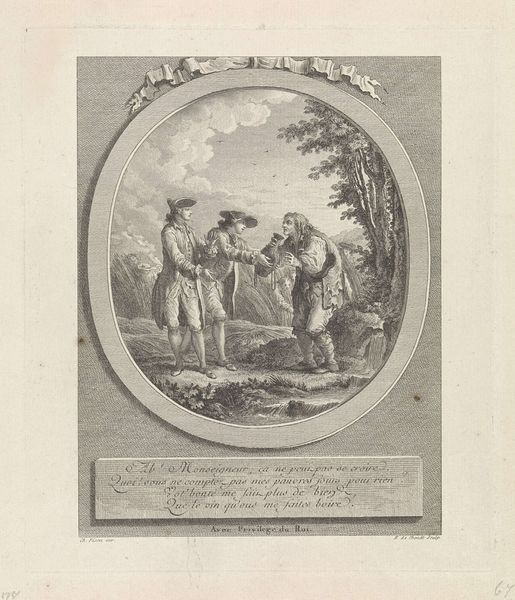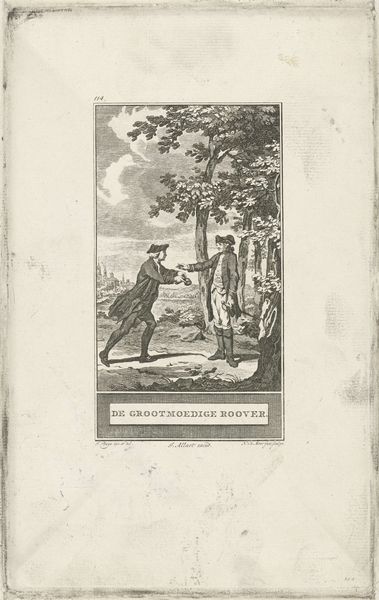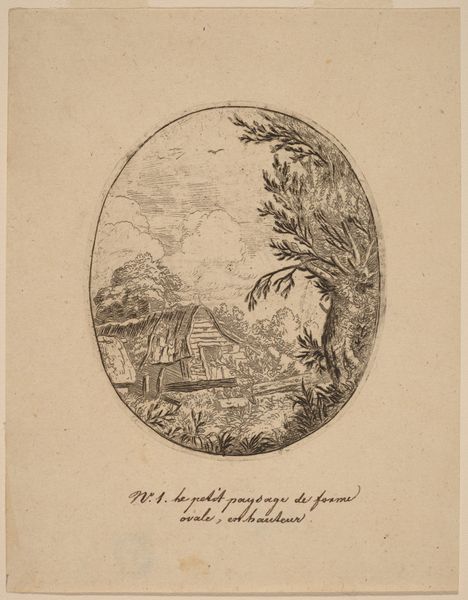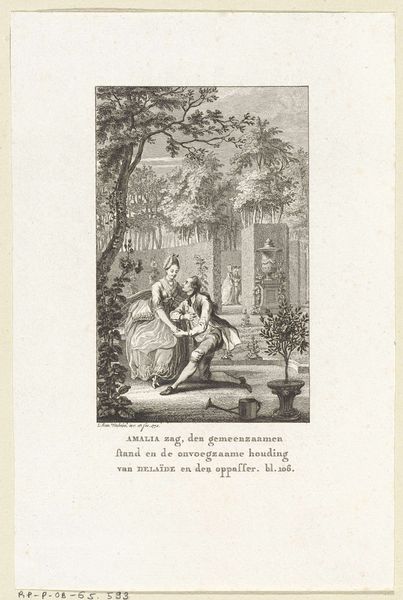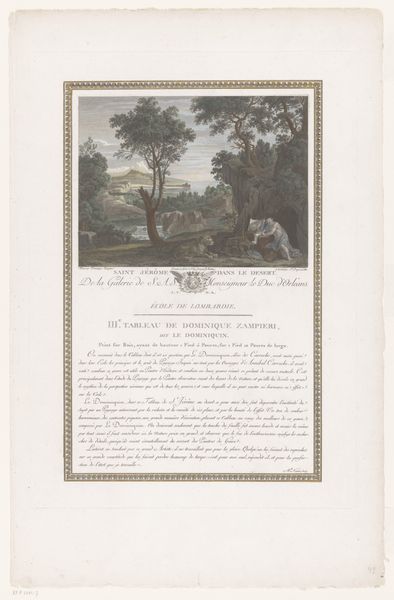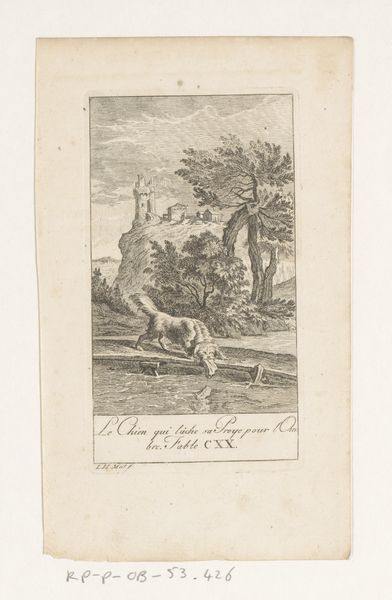
#
aged paper
#
light pencil work
#
blue ink drawing
#
old engraving style
#
personal sketchbook
#
pen-ink sketch
#
ink colored
#
sketchbook drawing
#
storyboard and sketchbook work
#
sketchbook art
Dimensions: height 79 mm, width 79 mm
Copyright: Rijks Museum: Open Domain
Curator: Ah, this little thing. "Putto bij een offerzuil," a delicate piece created in 1801 by Johannes Fredericus Lange. It's here at the Rijksmuseum. What's your gut reaction? Editor: Bleak but also precious. It's an illustration style, clearly intended for reproduction, with very controlled line work but despite this sense of order and crispness, it almost exudes sadness to me. Is it meant to be allegorical, perhaps? Curator: Spot on! I think Lange was riffing on neoclassical themes, hence the altar. Check out the little putto offering what appears to be a wreath; but the title lettering looms heavily above it, "The Servant of Two Masters," a farce of fidelity to classical values even within its own design. Do you find that ironic juxtaposition potent, as if we're invited to be skeptical? Editor: Absolutely, the visual language is self-deprecating from the offset. If we deconstruct the visual plane—the altar itself is solid, framed in the central medallion; but there's no fire. No passion, no actual act of sacrifice, just cold stone. And those skeletal trees frame its perimeter like spectres. Curator: Precisely! Lange has stripped bare the ceremony itself. There is a definite stillness here, beyond just being a printed engraving. The landscape is devoid of joy despite this supposed "jolly musical play", it almost feels to me he's capturing the death of enlightenment values and replacing them with a muted and introspective dawn. Do you pick that up at all? Editor: I do. The cold light illuminating from the left, but illuminating nothing; it hints at an unkept promise of intellectual optimism in that moment that feels profound. Curator: Agreed, the more I study Lange's rendering here, the more a quiet sense of disillusionment creeps in! Editor: Well, thank you for revealing the artfully crafted dimensions beneath its façade. It’s the way it seems so delicate and small but so profoundly, almost subversively, world-weary in such a quiet tone that really sits with me. Curator: Likewise! What I am left with is a strange nostalgia for what will be perceived through future artistic vision as classical idealism; but here we can experience, firsthand, a palpable sense of impending loss. It really does take your breath away.
Comments
No comments
Be the first to comment and join the conversation on the ultimate creative platform.
